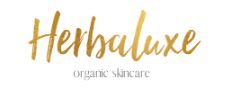In a survey by the Environmental Working Group, 2300 people, on average, reported to using 9 personal care products daily. Each of these products contain 126 unique ingredients. Of the people surveyed, one man in 100 and fully 25 percent of women apply 15 or more products daily. Unfortunately, most people use these products without second thought, without knowing the truth: no health studies or pre-market testing is required for these products. Ingredients go completely unassessed, eventually migrating and being absorbed into the skin without due caution.
A cosmetic manufacturer may use almost any raw material as a cosmetic ingredient and market the product with any approval from the FDA. So that leads us to the question: what do we actually know about FDA guidelines?
- The FDA does not test personal care products for safety before they are released into the market.
- The FDA does not require data from companies illustrating a product’s safety.
- Even if a product is found to be “unsafe,” the FDA can’t easily force a company to recall it.
- If “safety” testing is in fact done, it’s likely short-term reaction based, i.e. determining whether a product causes a rash.
- No one knows the long-term effects of many of the alarming chemicals used.
- Companies can choose to use almost any ingredient without any regulation or overhead.
- Some ingredients can permeate the body tissue and do not leave readily.
- 8. Health experts say “safe” dosages of carcinogens don’t exist – yet, they still are being used in skincare products.
- Chemicals have by-products and enzymatic reactions that occur within the body. These by-products are potentially harmful, yet, are not listed on the label.
- And fragrances? They are protected under what are known as trade secret laws … meaning ingredients are not listed in any way. So the “parfum,” “fragrance,” or “artificial fragrance” you see listed on an ingredients label? They could include absolutely anything (O’Connor and Sput, 2010, p. 10-11).
Why does clean beauty matter? While our skin’s epidermis acts as our protective first line of defense from the external world, some reports, including the Chemical Safe Skincare Campaign, say it still lets in as much as 60 percent of what we apply topically. You might hear a product’s two “hero” or “superstar” ingredients that have natural origin, but when you look at the ingredients list… you’ll find them at the end of the list, in a concentration of less than one percent and accompanied by tons of words you cannot even pronounce. You might think a “little bit of harm” within a skincare product won’t add up to much. But that “little bit of harm” isn’t an isolated event; pollution and environmental stressors surround us every single day, and all of this affects our health and well-being.
Clean beauty matters because in a survey of 230 people, people on average used nine products daily. 25 percent of women surveyed use 15 or more products each day. If 90 percent of the ingredients in those products were carcinogenic, think of the impact that could have. Even if a product contains carcinogens or other toxins, is toxic to the reproductive system, or is known to disrupt the endocrine system…it can still reach the market due to lack of FDA regulation.
There is absolutely no independent authority or agency, even within the government, whose job is to monitor what goes into skincare or other cosmetics products. There is no one who looks at a final formulation and declares its safety. You might not know that the European Union (EU) has banned over a thousand ingredients that the United States (US) still commonly uses, from drugstore pharmacy products to those that sell on the counters of Bloomingdales. Of the ingredients that the EU has banned (1k+), the US has banned thirty of those ingredients. Now that is frightening.
Of course, “fear mongering” is not one of our favorite tactics–and it’s definitely not the point of this article. We do want you to be more mindful of current research and what you’re putting on your body, knowing that there is no research that can back its safeness. What should you be looking out for?
- Phthalates
- Parabens
- Propylene glycol
- Sodium lauryl sulfate (SLS)
- Coal tar dyes
- Fragrance
These ingredients are known endocrine disruptors and can be carcinogenic. Dr. PhillippaDarbre was one of the first to bring forward the harm of some of these ingredients. In 2014, she reported that high concentrations of parabens were found in human breast tumors. The fact that parabens can mimic and interfere with estrogen within the body caused pause; this exposure to estrogen is one of the leading factors of the development of breast cancer.
Remember: brands get away with this because they can. There are endless natural brands that have stepped forward to keep our skin, bodies, and health safe. Use this as a mindfulness opportunity for self-care–only use the best. When you see a lengthy ingredients list with words you don’t recognize, there’s most likely a better alternative for you.
References:
Davis, Mia. “Why Clean Beauty Matters?” Credo. February 2, 2018.
Held, Lisa Elaine. “Paraben Update: New Research on Beauty’s Most Problematic Preservatives.”
Well+Good. September 10, 2012. http://www.wellandgood.com/good-looks/paraben-update-theres-new-research-on-beautys-most-problematic-preservatives/.
Houlihan, Jane, et al. “Not Too Pretty: Phthalates, Beauty Products & the FDA.” Safe Cosmetics.
Environmental Working Group. July 8, 2002,
www.safecosmetics.org/wp-content/uploads/2015/02/Not-Too-Pretty.pdf.
O’Connor, Siobhan, and Alexandra Spunt. No More Dirty Looks: The Truth about Your Beauty
Products–and the Ultimate Guide to Safe and Clean Cosmetics. New York, NY: Da Capo Press, 2010.
“Why This Matters – Cosmetics and Your Health” EWG.
http://www.ewg.org/skindeep/2011/04/12/why-this-matters/#.WrVHPORK3ct.

